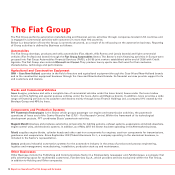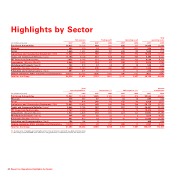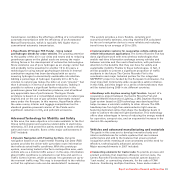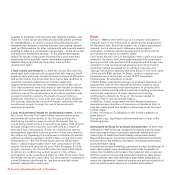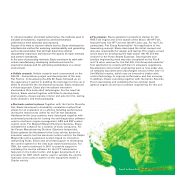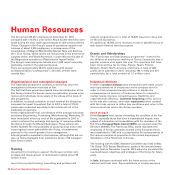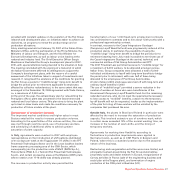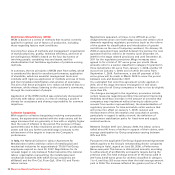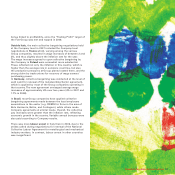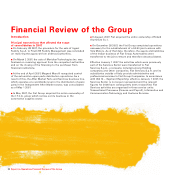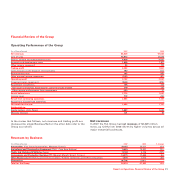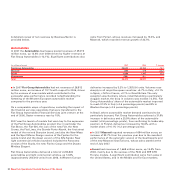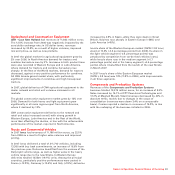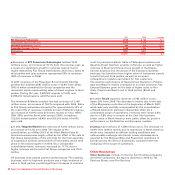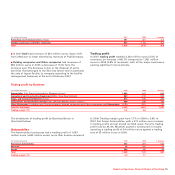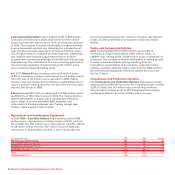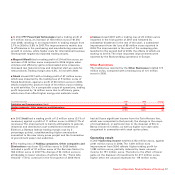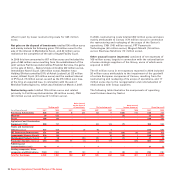Chrysler 2007 Annual Report Download - page 29
Download and view the complete annual report
Please find page 29 of the 2007 Chrysler annual report below. You can navigate through the pages in the report by either clicking on the pages listed below, or by using the keyword search tool below to find specific information within the annual report.World Class Manufacturing (WCM)
WCM is based on a series of methods that must be correctly
applied for optimal use of factors of production, including
those regarding factory work conditions.
Covering four areas of methods and management (organization
of work/productivity, quality, technical efficiency, and level of
service/logistics), WCM is based on the four key factors of
involving people, combating loss and waste, and the
standardization that facilitates application of problem-solving
methods.
In summary, the ten principles of WCM start from safety, which
is considered the basis for excellent performance; application
of standards, which are essential management tools; and
conclude with rigorous application of methods and use of tools
and the immediate identification and solution of anomalies.
The aim of all these principles is to reduce all kinds of loss to a
minimum, while always listening to the customer's comments,
through the involvement of people.
Application of the WCM method was extensively discussed at
all levels with labour unions, in view of creating a positive
climate for acceptance and sharing responsibility for common
objectives.
Collective bargaining
With regard to collective bargaining involving compensation
issues, the agreements reached with the trade unions call for
wage increases that are generally in line with or slightly higher
than the rate of inflation in the period. The purpose of these
agreements was to help employees preserve their purchasing
power and link any further potential wage increases to the
achievement of the targets to improve the Company’s
performance.
In Italy, the National Collective Labour Agreement for
Metalworkers (white and blue collar) of metallurgical and
mechanical industries for approximately 77,000 Fiat Group
employees expired on June 30, 2007. Negotiations for its
renewal began in July between Federmeccanica (the national
labour organization representing the metallurgical and
mechanical industries with which Group companies are
affiliated) and the Fim-Cisl, Fiom-Cgil, Uilm-Uil, and Fismic
labour unions.
Negotiations appeared, at times, to be difficult as some
disagreements arose over both wage issues and certain union
demands regarding regulatory provisions (such as the reform
of the system for classification and introduction of greater
restrictions on the use of temporary workers). On January 20,
2008 an agreement was reached between the parties: the new
agreement will be valid for 30 months (until December 31,
2009) for the wage related provisions and until December 31,
2011 for the regulatory provisions. Wage increases were
agreed to for a total of 127 euros gross per month (these
amounts refer to a worker classified in category 5) granted in
three instalments: 60 euros from January 1, 2008, another 37
euros from January 1, 2009, and a further 30 euros from
September 1, 2009. Furthermore, a one-off payment of 300
euros gross will be made in March 2008 to cover the period
between July and December 2007.
It is estimated that once this agreement is fully applied, in
2010, all of the wage increases envisaged in it will cause
labour costs for all Group companies in Italy to rise by slightly
more than 6%.
The changes envisaged in the regulatory provisions include
certain measures regarding working time aimed at improving
flexibility (an 8-hour increase in the amount of overtime that
companies may implement without having to obtain prior
consent from worker representatives); the standardisation of
regulatory provisions for blue and white collar workers that
will come into effect on January 1, 2009; revision and
reinforcement of the information and consultation system,
particularly in regard to safety at work; the definition of
employment stabilisation paths for fixed-term and supply
contract workers.
Between October 2007 and January 2008, the labour unions
called about 40 hours of strikes in support of their claims, with
average participation by Group employees varying between
20% and 30%.
Pursuant to the applicable Fiat Group Supplemental Agreement
(which applies to the Group’s metalworking Sector companies
operating in Italy), signed on June 28, 2006, a Performance
Bonus was paid. This bonus is determined annually according
to achievement of profitability and quality targets during the
previous year. The total average amount of the bonus paid in
2007 was 2,043 euros gross for workers classified in category
1 to 4, and thus 200 euros more than the total average amount
paid in 2006. The increase reflected the greater portion of the
Report on Operations Human Resources28


